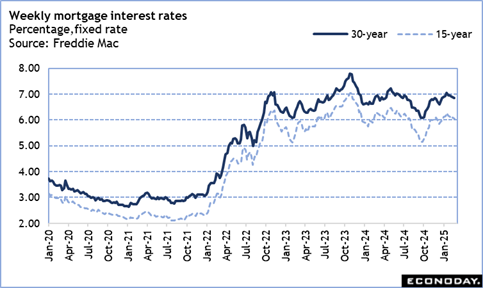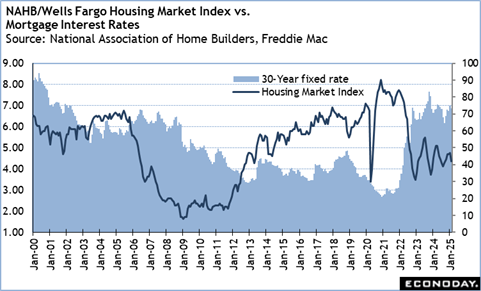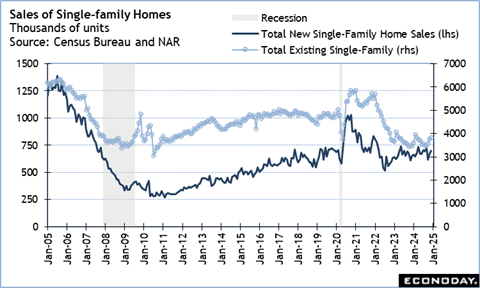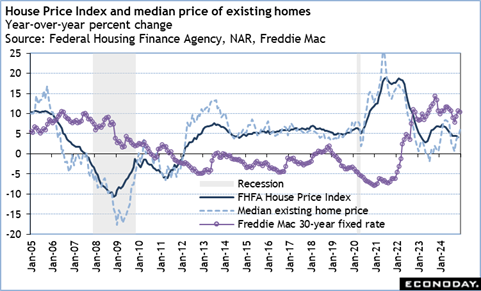The economic data calendar in February presents some challenges in interpreting the scheduled reports. Data for December and January will not encompass more recent developments. Moreover, the January numbers could be affected by the severe cold and winter storms that disrupted some activity. In a rapidly altering geopolitical climate, businesses and consumers are facing higher levels of uncertainty about the economic outlook. The consequences of these changes – if any, and whether positive or negative for the economy – may take another month or two to be meaningfully visible as reports are published.
An example of this is the housing data. The February NAHB/Wells Fargo housing market index and weekly MBA report on mortgage applications suggest that the housing market is weakening. Homebuilders are more concerned about future activity both in terms of consumer demand for newly built homes and their costs and availability of construction supplies and labor. Applications for mortgages are not picking up in advance of the spring buying season as consumers are increasingly worried about the economy and job security. While home affordability is a little improved with rates for a 30-year fixed rate mortgage declining weekly since mid-January, it still remains uncomfortably close to the 7 percent mark.
The Freddie Mac rate for a 30-year fixed rate mortgage was as low as 6.60 percent in the week of December 12, 2024, then rose to 7.04 percent in the January 16, 2025 week from where it has inched down to 6.85 percent as of February 20.
The housing-related data in the week will not clarify the picture. The FHFA house price index and the Case-Shiller home price index on Tuesday at 9:00 ET are both for December. These will confirm the broad moderation in home prices up through the end of 2024, but not what effect conditions in January had on prices.
Sales of new single-family homes in January at 10:00 ET on Wednesday should be down due to adverse weather conditions that kept buyers at home as well as the chilling in demand from economic uncertainty. Also, with more existing units to choose from, buyers will be looking for bargains and taking more time to shop around, particularly in the single-family market.
The NAR pending home sales index for January at 10:00 ET on Thursday will be for contracts signed in that month using mortgages taken out in December when rates were lower. This will mean expectations for an uptick in existing home sales in February that may not be sustained into March.





 Econoday’s Global Economics articles detail the results of each week’s key economic events and offer consensus forecasts for what’s ahead in the coming week. Global Economics is sent via email on Friday Evenings.
Econoday’s Global Economics articles detail the results of each week’s key economic events and offer consensus forecasts for what’s ahead in the coming week. Global Economics is sent via email on Friday Evenings. The Daily Global Economic Review is a daily snapshot of economic events and analysis designed to keep you informed with timely and relevant information. Delivered directly to your inbox at 5:30pm ET each market day.
The Daily Global Economic Review is a daily snapshot of economic events and analysis designed to keep you informed with timely and relevant information. Delivered directly to your inbox at 5:30pm ET each market day. Stay ahead in 2025 with the Econoday Economic Journal! Packed with a comprehensive calendar of key economic events, expert insights, and daily planning tools, it’s the perfect resource for investors, students, and decision-makers.
Stay ahead in 2025 with the Econoday Economic Journal! Packed with a comprehensive calendar of key economic events, expert insights, and daily planning tools, it’s the perfect resource for investors, students, and decision-makers.